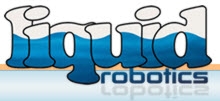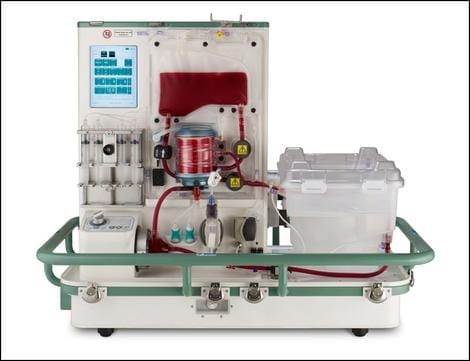Catching a Wave, and Measuring It
Mr. Gosling is transforming a fleet of robots that move out in the ocean to measure everything from weather to oil slicks, sharply reducing many of the costs of ocean-related businesses.
If his plans sound rather extreme, consider this: Mr. Gosling designed of one of the most influential and widely used computer languages, Java. The Silicon Valley company he joined, Liquid Robotics, has raised serious money to accomplish the mission — $40 million, including $22 million in June from VantagePoint Capital Partners and Schlumberger, the oilfield services company.
Liquid Robotics’ product, a Wave Glider, is about the size of a surfboard. Using a wave-based propulsion system and two solar panels to fuel its computers, the robots travel slowly over the ocean, recording data. The sensor data is crunched onboard by low-power cellphone chips, and then shipped by satellite or cellphone to big onshore computers that do complex analysis.
“Getting a computer out into the middle of the ocean is a pretty big challenge, but that is the attractive thing,” said Mr. Gosling, chief software architect at Liquid Robotics. “Three-quarters of the planet is ocean, and it’s still dark to us.”
Liquid Robotics is working toward networking tens of thousands of the craft, adding sensors and onboard computing capability so the robots can manage themselves during oceangoing projects lasting years. Right now, the robots work solo.
“This is a bit like 1960 in the Space Age, when they had launched just a few satellites,” said Edward Lu, a former astronaut who is in charge of “innovative applications” at the company. “Space is now a normal part of life, used for television transmission, credit card transactions and driving directions. We can do the same thing with the sea.”
Liquid Robotics has sold Wave Gliders to the federal National Oceanic and Atmospheric Administration for $100,000 and up, depending on what kind of sensors are needed. The company has built about 70 Wave Gliders since 2009, largely for use by the petroleum industry and marine scientists. The company builds another 40 of the devices every three months.
It also has a service for sending data to companies, for $1,000 to $3,000 a day. “We replace ships that cost $50,000 to $100,000 a day to operate,” said Bill Vass, Liquid Robotics’ chief executive. “Our last sortie covered 8,600 miles of the Gulf of Mexico for BP. By ship that would have cost them $10.5 million. We did it for $1.5 million.”
Other firms, like iRobot, also make seagoing robots with sensors, but these tend to be used for underwater work and aren’t designed to be networked. When the Wave Gliders talk with each other, Mr. Gosling said, they can be used to signal other robots to join them on missions like measuring the size of an oil slick or an algae bloom, or determining patterns of midocean currents, alerting ships to avoid or seek them, saving on fuel costs.
He also needs to figure out ways the robots can navigate on their own. Currently onshore pilots manage 10 to 15 gliders at a time, a technique Mr. Gosling finds primitive. “They have tools that remind me of banging two rocks together,” Mr. Gosling said. “If a robot detects a ship, it should just get out of the way.”
There are other hazards. One craft was bitten by a shark. It lost a sensor, but still managed to make it to a rescue craft. In November the company is starting a yearlong awareness-building campaign by launching four craft on a trip across the Pacific. Two robots will aim for Tokyo, two for Sydney. Liquid Robotics will post sensor data online for the taking, awarding a prize to whomever comes up with the most innovative use for the information.
Mr. Lu, an evangelist for the technology, meets scientists and private sector researchers to convince them that the age of ocean-borne sensors is nigh.
He is a Google alumnus and joined Liquid Robotics in September. At Google, Mr. Lu ran teams for three years that designed cameras to digitize books and new types of power meters and other devices that, as he put it, “collected data from the real world.”
Read more . . .
Bookmark this page for “ocean robots” and check back regularly as these articles update on a very frequent basis. The view is set to “news”. Try clicking on “video” and “2” for more articles.









